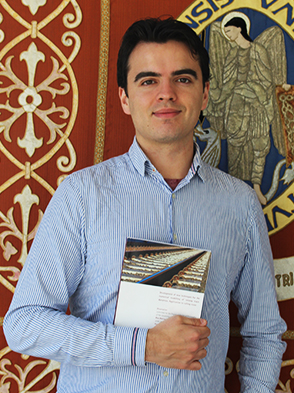PhD Thesis, Blas Blanco

Blas Blanco
Title: Development of new techniques for the numerical modelling of railway track dynamics. Application to rolling noise
Defense Date: 15/03/2019
Director: Nere Gil-Negrete
Abstract
The numerical modelling is widely employed for the prediction of the railway track dynamic behaviour, which is of utmost importance for the characterisation of the undesired medium-high frequency phenomena, such as corrugation, wheel-out-of-roundness and noise emission. This study is devoted to the improvement of railway track numerical modelling, the efficient resolution of the problem in the time domain and the assessment of rolling noise for different approaches of the track modelling.
Regarding the enhancement of the railway track numerical modelling, two main core ideas have led the development of this task. On the one hand, the rail modelling, and on the other hand, the characterisation of the finite length nature of track supports. The proposals of this work include two basic premises, accuracy and computational efficiency.
Firstly, the study makes use of Timoshenko beam theory for the numerical description of the rail. However, the conventional Timoshenko finite element involves drawbacks for the description of the rail dynamic behaviour and the calculation of the wheel-rail interaction in the time domain. These problems are addressed by improving the finite element formulation, which is based on the description of its local displacements.
Secondly, the versatility of numerical methods is exploited to develop a distributed model of support. It substitutes the usual concentrated model, which entails overestimation of the periodicity effects and disruption of the wheel-rail interaction in the time domain.
Thirdly, the advantages of the formulation of numerical models in the frequency domain are explored focusing on the ability to fairly describe the sleeper dynamics, the enhancement of the model boundaries and the realistic modelling of the track components dissipative behaviour. Moreover, the frequency domain response can be used to obtain the wheel-rail interaction in the time domain efficiently, by means of the moving Green's function.
Lastly, this work deals with the assessment of rolling noise, in which particular emphasis is made on the influence of track dynamics in the noise prediction. At this regard, a methodology is proposed to account for the track periodicity, load speed and finite length of supports.